How Much Energy Efficient are Renewable Energy Sources Cooperatives’ Initiatives?
Abstract
1. Introduction
- (a)
- to further statistically analyze and evaluate the differentiation of the proposed energy efficiency (EE) interventions in terms of energy consumption amongst the clustered demographic and climate energy-related groups;
- (b)
- to identify various factors strongly connected with energy consumption, quantifying this correlation. Typical factors are the demographic categories, the meteorological zones, and the proposed interventions of each REScoop, which are presented analytically in this paper;
- (c)
- to provide a forward-thinking approach employing a systematic, in-depth, analysis of REScoops’ customers and clarify their behavioral details and uncertainties;
- (d)
- to quantify the share of each proposed intervention for each participated REScoop regarding energy consumption through linear regression models.
2. Presentation of the Methodology
2.1. Data Collection and Pre-Processing
2.2. The Challenges Confronted by REScoops
2.3. Statistical Analysis
Statistical Analysis Tools
- Cooperative and non-cooperative members;
- Prosumers or non-prosumers;
- Demographics (number of residents, building area, and building insulation);
- Meteorological region/zone;
- Proposed interventions (promotion by using leaflets, technical support, software solutions, engagement activities—such as generation action, empowering action, Dr. Watt, smart meter installation (SMI), etc.);
- Tariffs (special, flat, or time of use (TOU), baixa tensao normal (BTN) simple, bi- Horário, and tri-Horário);
- Contract types (residential/commercial);
- 1)
- Correlation coefficients: assuming values in the range from −1 to +1, where +1/ −1 indicates the most robust possible “agreement”. Two correlation coefficients were used:
- The Pearson product-moment correlation coefficient (r and R), a degree of the strength and direction of the linear relationship between two quantitative variables (i.e., monthly bill and heating/cooling degree days);
- Kendall’s tau (nonparametric), to measure the relationship between rankings of ordinal variables.
- 2)
- Linear regression models:
- Simple (linear) regression models, to check if there is a relation between two quantitative variables (e.g., actual consumption and average monthly temperature) and to describe the type and the strength of this relationship;
- Multiple (linear) regression models to check if there is a relationship between a quantitative variable and quantitative/qualitative (categorical) variables. The categorical variables/characteristics (e.g., member or not of the cooperative) are either dichotomous (two possible values) and they are coded as 0 and 1 (if a customer has the characteristic or not) or with at least three distinct values (in this case, a recoding takes place; the new variables resulted are also dichotomous). (All the models constructed and their coefficients are statistically significant at an a = 0.05 significance level.);
- 3)
- ANOVA tests on whether the means of several groups/treatments are different;
- 4)
3. Results
3.1. SEV—Italy
- 1)
- Average daily temperature and HDDs are two (“perfect”) periodic time series (Figure 2a,b and Figure 3a,b). They tend to be reversely proportional, as expected, since HDD indicates the need for heating, and when the temperature increases, this need usually decreases. The lowest temperatures are being observed in December/January and the highest in June; the exact opposite applies to HDDs;
- 2)
3.2. Coopérnico—Portugal
- 1)
- Type of customers;
- 2)
- Meteorological region—zone;
- 3)
- Energy cost—tariffs;
- 4)
- Contracted power.
3.3. Som Energia – Spain
- (a)
- As for “generation action (contract has invested in power plants)”, 6.7% of the total Som Energia members have taken part in generation action (2.4% for nonmembers), which means that the members of the cooperative take part in action 2.5 times more often;
- (b)
- As for “empowering action (contracted clients have received ΕΕ reports)”, 30.7% of the total Som Energia customers have taken part in empowering action (27.9% for nonmembers), which means that members of the cooperative take part also in empowering action more often;
- (c)
- As for “tariff type”, the variables special tariffs and member are dependent (significance = 0.000), meaning that the tariff type a customer is being charged by depends if he/she is a member or not. Of those charged with special tariffs, 75.4% are members (70.6% for nonmembers).
- (a)
- SMI (significance = 0.000), meaning that if a consumer is using a smart meter or not, it depends on the tariff type he/she is being charged by; 61.8% of those charged with special tariffs are using SMI (52.4% for those charged without special tariffs);
- (b)
- “Generation action” (significance = 0.000); i.e., if a consumer is taking part in generation action depends on the tariff type he/she is being charged by; those charged with special tariffs take part in generation action more often (8% to 4.9% for those charged without special tariffs (s.t.));
- (c)
- “Empowering action” (significance = 0.000); i.e., if a consumer is taking part in empowering action depends on the tariff type he/she is being charged by; those charged with special tariffs take part in empowering action more often (34.3% to 28.9% for those charged without s.t.).
3.4. Ecopower—Belgium
- 1)
- The variables “prosumer” and “contract type” are dependent, which means that the contract type you belong to depends on if you are prosumer or not (the most energy-responsible customers seem to be those of contract-type residentials; 48.6% are prosumers).
- 2)
- Furthermore, there is a significant difference in the amount of electricity produced by own means amongst the contract-type groups (significance = 0.000). The highest (mean) amount of electricity produced by own means is for contract type A (residential): 1750 kWh (2016).
3.5. Enercoop—France
3.5.1. Energy Production
3.5.2. Energy Consumption
- 1)
- The variables “cooperative member” and “contract type” are dependent (significance = 0.000), which means that if you are contract type A or B depends on whether you are a member of Enercoop or not. Thirty-two point eight percent of the members are type A and 67.2% are type B (the % for nonmembers are 53.1% type A and 46.9% type B);
- 2)
- The variables “contract type” and “SMI” are dependent (significance = 0.000). Fifteen point eight percent of contract type A customers have SMIs in comparison to 10% of contract type B customers, who have installed meters;
- 3)
- The variables “contract type” and “Dr. Watt” are also dependent (significance = 0.000). Zero point nine percent of contract type A members took part in the Dr. Watt program and 0.8% of contract type B took part in the program.
- 1)
- The variables “meteorological region” and “SMI” are dependent (significance = 0.000); i.e., if a customer has an SMI, it depends on the meteorological region he/she lives in. The percentage of those who have SMIs ranges from 9.8% for region A customers to 17.4% of region D customers;
- 2)
- The variables “meteorological region” and “Dr. Watt” are dependent (significance = 0.000). Customers of regions D and E take part in the program in more significant numbers (1.8% and 1.2%, respectively).
3.6. Regression Models
4. Discussion and Conclusions
- 1)
- Prosumers not only increase in numbers but also produce more and more electricity/energy from RES (consume less and less energy produced by fossil fuels), even though prosumers’ buildings are being inhabited (on average) by more residents;
- 2)
- More and more REScoops’ customers are taking part in energy reduction actions initiated by the cooperatives. Customers who participate in these actions tend to consume less energy;
- 3)
- Members of the “implementation measures groups” take part in energy reduction actions more often. Consequently, they also tend to consume less and less electricity produced by fossil fuels.
- could be useful for the REScoops as an evaluation tool for their practices on the different customer groups;
- can further help the REScoops to improve or even substitute and replace practices with new ones (more effective);
- could give a helping hand to eliminate or even fix data-recording methodological problems;
- can help in evaluating the expectations and commitments of REScoops’ members as well;
- could provide robust results in proving that REScoops are themselves a dynamically new investment tool in the 21st-century world by evaluating their efforts through statistically based methods.
- even more REScoops to share their data to get even more reliable results and;
- highly effective interventions need to be tested in different REScoops from different countries to assist the evaluation process, presented, to get more holistic outcomes.
- The majority of the proposed interventions had a negative correlation with energy consumption, leading to energy savings and GHG diminishing;
- Prosumers not only increase in numbers but also produce more and more electricity/energy from RES;
- There is a significant increase in energy production by cooperatives’ members. More than 22 GWh were totally saved in energy consumption and almost 4500 tons of CO2eq.
Author Contributions
Funding
Acknowledgments
Conflicts of Interest
References
- Boemi, S.; Papadopoulos, A.M. Energy & Buildings Energy poverty and energy efficiency improvements: A longitudinal approach of the Hellenic households. Energy Build. 2020, 197, 242–250. [Google Scholar]
- Batinge, B.; Musango, J.K.; Brent, A.C. Sustainable energy transition framework for unmet electricity markets. Energy Policy 2019, 129, 1090–1099. [Google Scholar] [CrossRef]
- Oteman, M.; Wiering, M.; Helderman, J. The institutional space of community initiatives for renewable energy: A comparative case study of the Netherlands, Germany and Denmark. Energy Sustain. Soc. 2014, 4, 1–17. [Google Scholar] [CrossRef]
- Heras-Saizarbitoria, I.; Sáez, L.; Allur, E.; Morandeira, J. The emergence of renewable energy cooperatives in Spain: A review. Renew. Sustain. Energy Rev. 2018, 94, 1036–1043. [Google Scholar] [CrossRef]
- Sifakis, N.; Savvakis, N.; Daras, T.; Tsoutsos, T. Analysis of the Energy Consumption Behavior of European RES Cooperative Members. Energies 2019, 12, 970. [Google Scholar] [CrossRef]
- International Labour Organization. Providing Clean Energy and Energy Access through Cooperatives Providing Clean Energy and Energy Access; International Labour Office Cooperatives Unit (COOP): Geneva, Switzerland, 2013; ISBN 978-92-2-127528-2. [Google Scholar]
- Michalena, E. Local challenges in the promotion of renewable energy sources: The case of Crete. Energy Policy 2018, 37, 2018–2026. [Google Scholar] [CrossRef]
- Hills, J.M.; Evanthie, Μ.; Chalvatzis, K.J. Technological Forecasting & Social Change Innovative technology in the Pacific: Building resilience for vulnerable communities. Technol. Forecast. Soc. Chang. 2018, 129, 16–26. [Google Scholar]
- Hentschel, M.; Ketter, W.; Collins, J. Renewable energy cooperatives: Facilitating the energy transition at the Port of Rotterdam. Energy Policy 2018, 121, 61–69. [Google Scholar] [CrossRef]
- Bertheau, P.; Dionisio, J.; Jütte, C.; Aquino, C. Challenges for implementing renewable energy in a cooperative-driven off-grid system in the Philippines. Environ. Innov. Soc. Transit. 2019, 1–13. [Google Scholar] [CrossRef]
- Yildiz, Ö.; Rommel, J.; Debor, S.; Holstenkamp, L.; Mey, F.; Müller, J.R.; Radtke, J.; Rognli, J. Renewable energy cooperatives as gatekeepers or facilitators? Recent developments in Germany and a multidisciplinary research agenda. Energy Res. Soc. Sci. 2015, 6, 59–73. [Google Scholar] [CrossRef]
- Lehtonen, O.; Okkonen, L. Energy cost reduction creates additional socioeconomic benefits– The case of Eno Energy Cooperative, Finland. Energy Policy 2019, 129, 352–359. [Google Scholar] [CrossRef]
- Peng, Y.; Li, J.; Park, S.; Zhu, K.; Hassan, M.M.; Alsanad, A. Energy-efficient cooperative transmission for intelligent transportation systems. Futur. Gener. Comput. Syst. 2019, 94, 634–640. [Google Scholar] [CrossRef]
- Bauwens, T. Analyzing the determinants of the size of investments by community renewable energy members: Findings and policy implications from Flanders. Energy Policy 2019, 129, 841–852. [Google Scholar] [CrossRef]
- Moroni, S.; Alberti, V.; Antoniucci, V.; Bisello, A. Energy communities in the transition to a low-carbon future: A taxonomical approach and some policy dilemmas. J. Environ. Manag. 2019, 236, 45–53. [Google Scholar] [CrossRef] [PubMed]
- Haas, T. Struggles in European Union energy politics: A gramscian perspective on power in energy transitions. Energy Res. Soc. Sci. 2019, 48, 66–74. [Google Scholar] [CrossRef]
- Chalkiadakis, G.; Akasiadis, C. D2.1 Zero-point report on data of Supplying REScoops (Public Summary). 2017. Available online: http://www.rescoop-ee.eu/rescoop-plus (accessed on 15 January 2020).
- RESCOOP Plus Project Proposal, H2020-EE-2015-3-MarketUptake. 2015. Available online: http://www.rescoop-ee.eu/rescoop-plus (accessed on 25 January 2020).
- REScoop Plus Project, Deliverable D2.2-Methodology for Analysis. 2016. Available online: http://www.rescoop-ee.eu/rescoop-plus (accessed on 12 February 2020).
- Augustine, P.; McGavisk, E. The next big thing in renewable energy: Shared solar. Electr. J. 2016, 29, 36–42. [Google Scholar] [CrossRef]
- Capellán-Pérez, I.; Campos-Celador, Á.; Terés-Zubiaga, J. Renewable Energy Cooperatives as an instrument towards the energy transition in Spain. Energy Policy 2018, 123, 215–229. [Google Scholar] [CrossRef]
- Lohmann, G.; Heilmann, G.; Hacke, U.; Robinson, S. The ICT PSP Methodology for Energy Saving Measurement—A Common Deliverable from Projects of ICT for Sustainable Growth in the Residential Sector; Project Co-Funded by the European Commission within the ICT Policy Support Programme. Available online: https://cordis.europa.eu/docs/projects/cnect/6/250496/080/deliverables/001-ARES975520CIPCommondeliverableeSESH.pdf (accessed on 22 February 2020).
- DeGroot, M.H.; Schervish, M.J. Probability and Statistics, 4th ed.; Addison-Wesley: Boston, MA, USA, 2012. [Google Scholar]
- Apostolakis, I.; Daras, T.; Stamouli, M.A. Exercises in Applied Statistics in Health Sector, 2nd ed.; Papazisis: Athens, Greece, 2009. [Google Scholar]
- Terkenli, T.S.; Daras, T.; Maria, E.-A. Landscape Notions among Greek Engineering Students: Exploring Landscape Perceptions, Knowledge and Participation. Land 2019, 8, 83. [Google Scholar] [CrossRef]
- Proka, A.; Loorbach, D.; Hisschemöller, M. Leading from the Niche: Insights from a strategic dialogue of renewable energy cooperatives in the Netherlands. Sustainability 2018, 10, 4106. [Google Scholar] [CrossRef]
- Ropuszynska-Surma, E.; Weglarz, M. Profiling end user of renewable energy sources among residential consumers in Poland. Sustainability 2018, 10, 4452. [Google Scholar] [CrossRef]
- Fan, S.; He, G.; Jia, K.; Wang, Z. A novel distributed large-scale demand response scheme in high proportion renewable energy sources integration power systems. Appl. Sci. 2018, 8, 452. [Google Scholar] [CrossRef]
- Moroni, S.; Antoniucci, V.; Bisello, A. Local energy communities and distributed generation: Contrasting perspectives, and inevitable policy trade-offs, beyond the apparent global consensus. Sustainability 2019, 11, 3493. [Google Scholar] [CrossRef]
- Iris, Ç.; Lam, J.S.L. A review of energy efficiency in ports: Operational strategies, technologies and energy management systems. Renew. Sustain. Energy Rev. 2019, 112, 170–182. [Google Scholar] [CrossRef]

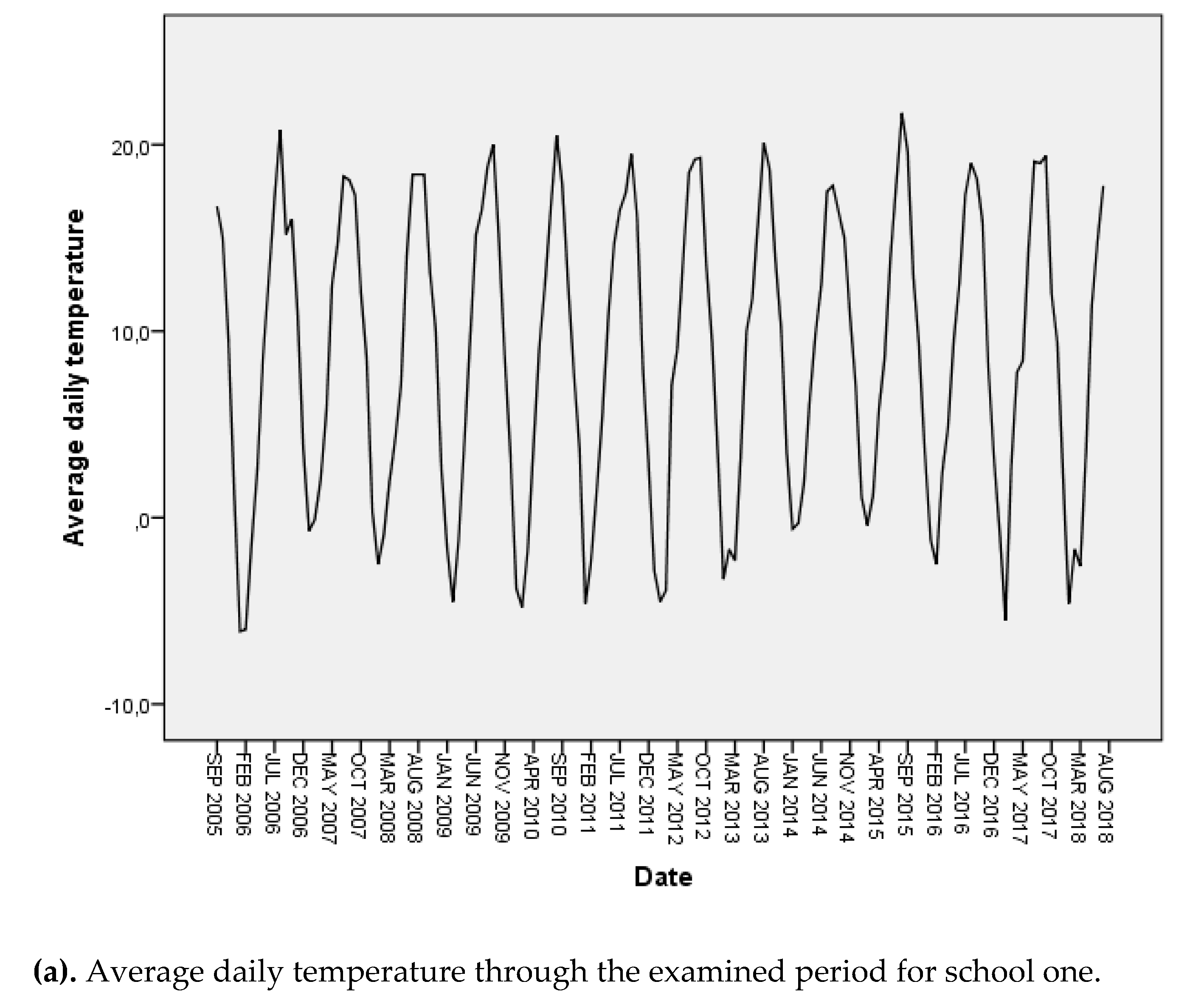
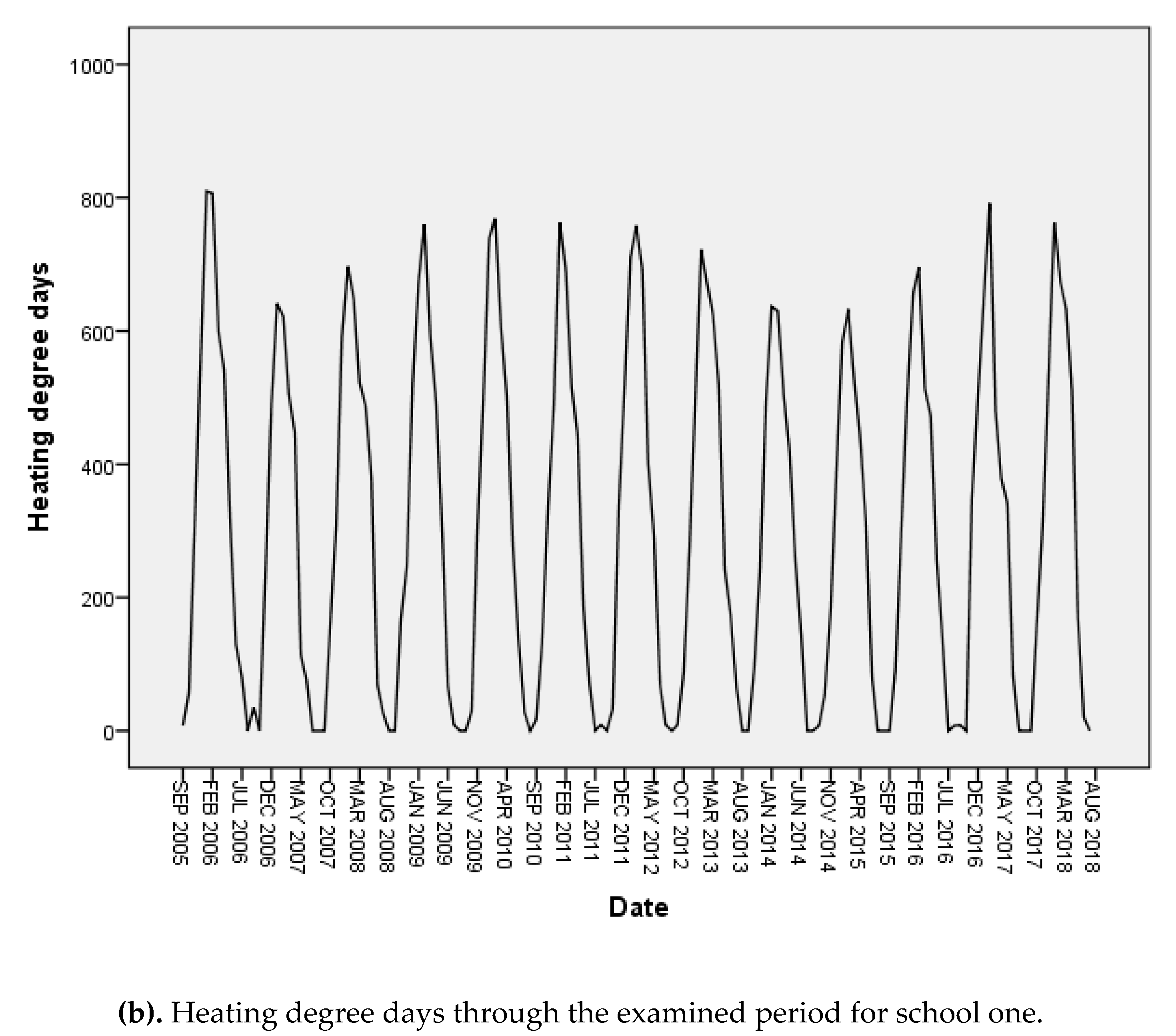
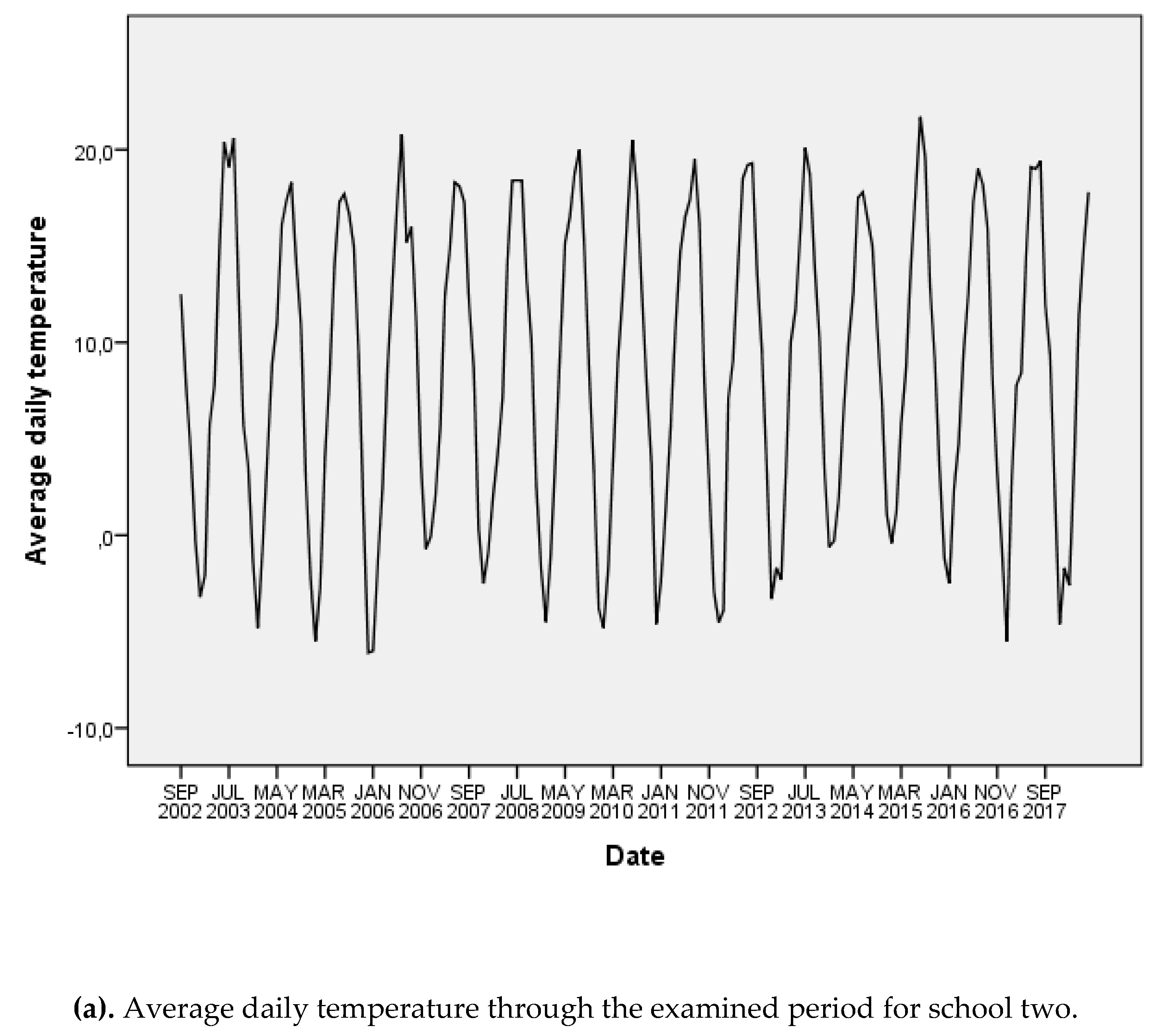
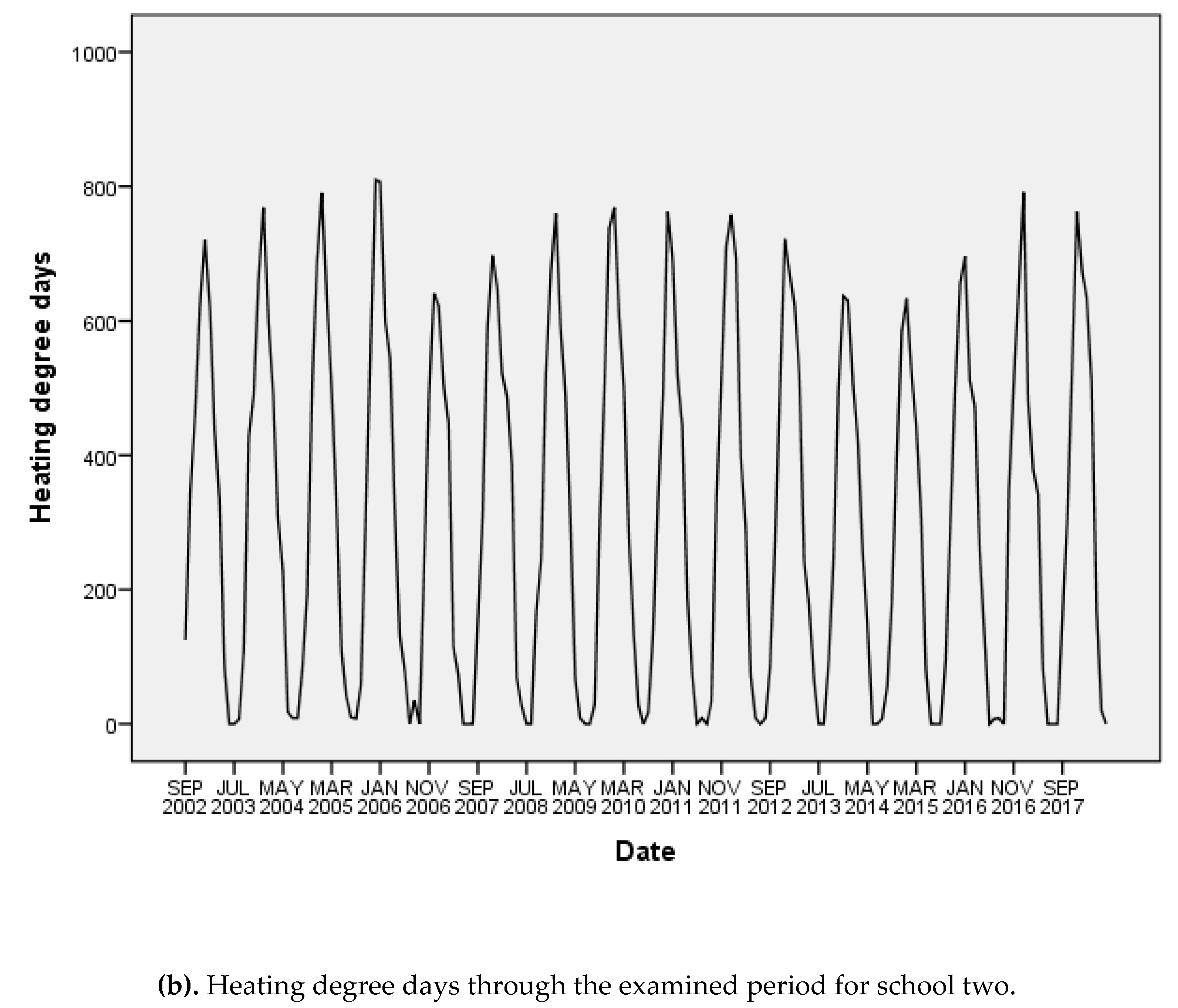
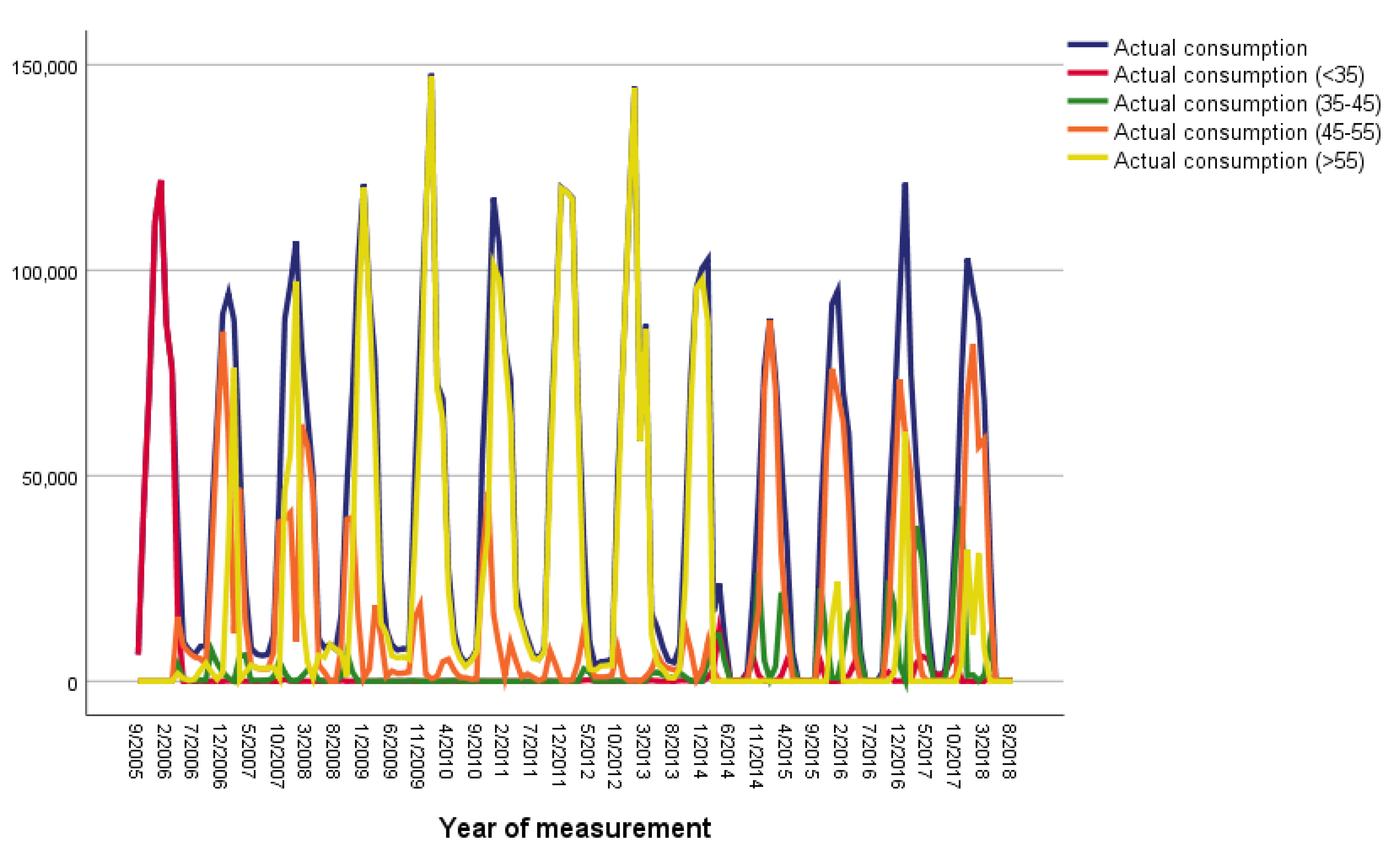

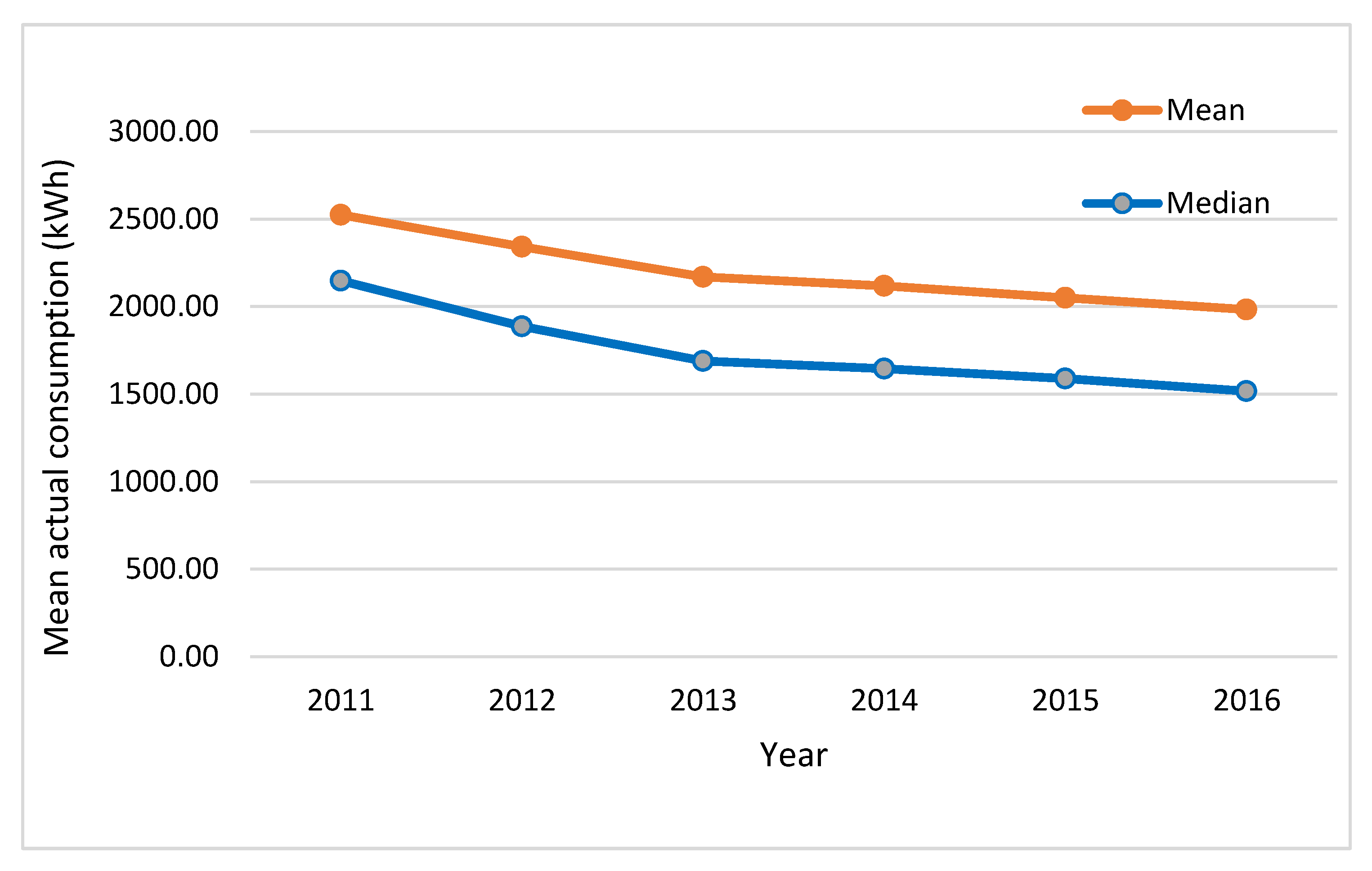
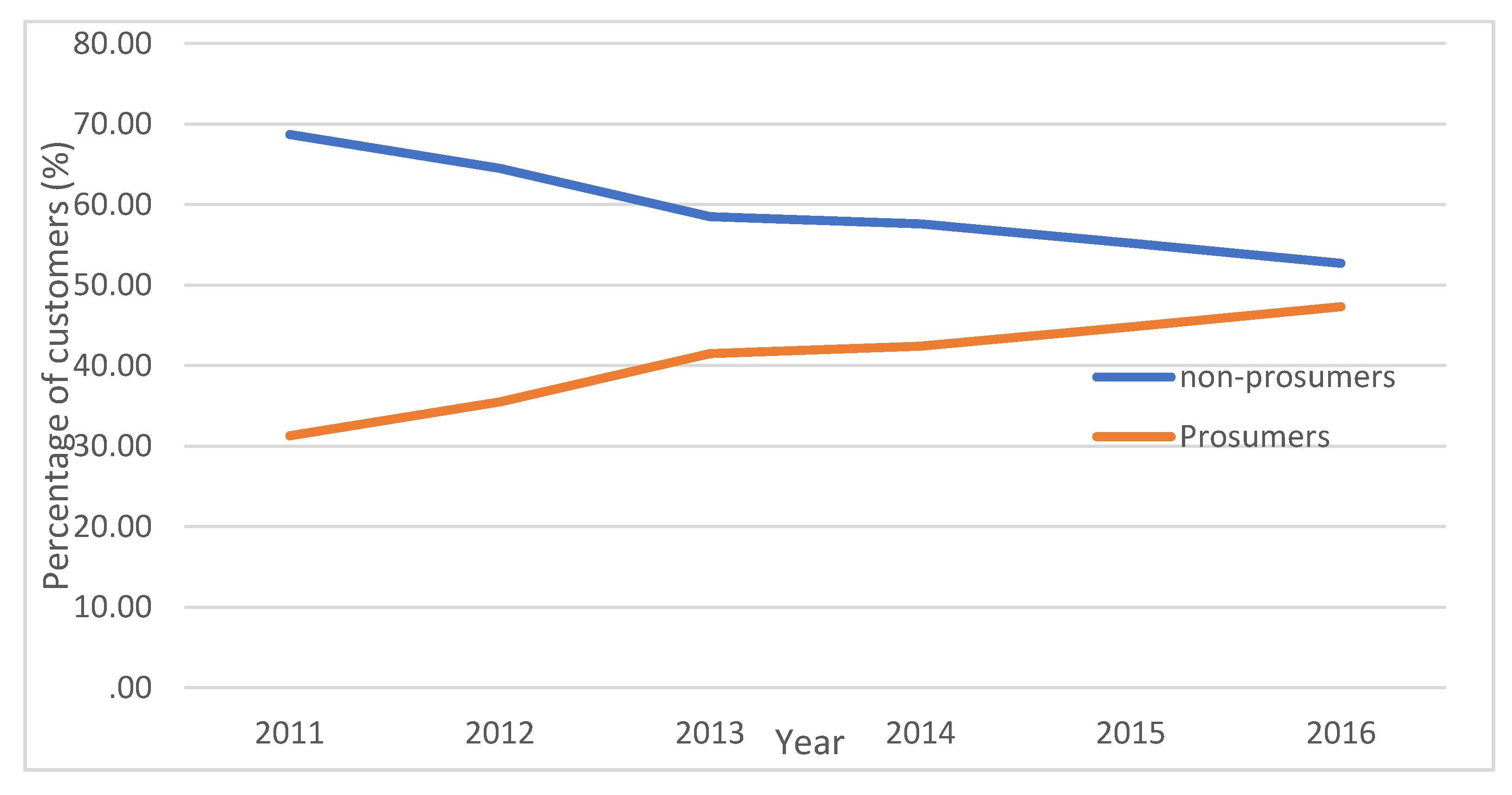
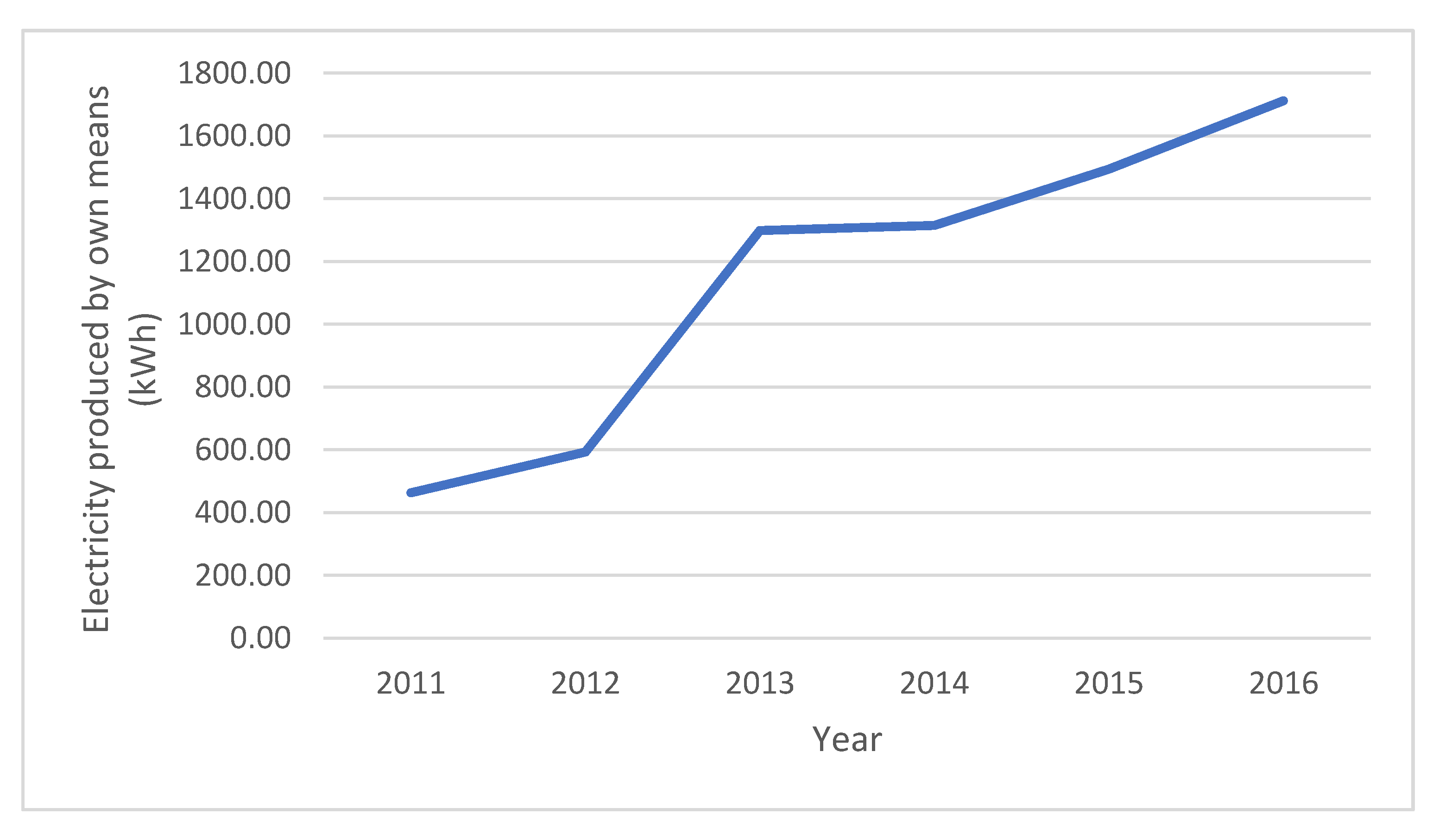

| REScoop (Sample Size) | Period of Measurements | Number of Months | Production Data | Intervention | MeteoData | Demographic Data | Mean Actual Consumption (kWh) | Clustering Criteria/Groups | |
|---|---|---|---|---|---|---|---|---|---|
| SEV (346) | School1 | 09/2005–08/2018 | 156 | No | Smart Meter Installation (SMI) Optimization of the Return Flow | Yes | No | 44,878 | actual consumption regarding the amount of heat, EE intervention (before and after) |
| School2 | 09/2002–06/2018 | 190 | 42,915 | ||||||
| Coopérnico (9,441) | 06/2015-06/2018 | 37 | No | Special Tariffs | Yes | No | 301.34 | type, zones, tariffs, contracted power | |
| Som Energia (862,886) | 01/2015–08/2018 | 44 | Yes | SMI Special Tariffs Generation action Empowering action Promotion by using EE leaflets | Yes | No |
| members, EE interventions, type | |
| Ecopower (194,028) | 01/2011–12/2016 | 72 | Yes | Promotion by using EE leaflets EnergieID | No | Yes |
| members, EE interventions, type, prosumers 2 | |
| Enercoop (1,024,093) | 01/2015–10/2018 | 45 | Yes | SMI Dr. Watt | Yes | No | 350 | members, meteorological region, contract type, EE interventions | |
| School One | School Two | |
|---|---|---|
| Difference on actual consumption between the months without the EE intervention (SMI) and the ones with it |
|
|
| Customer Type | Tariff | |||
|---|---|---|---|---|
| BTN–BI-Horario | BTN–Simples | BTN–TRI-Horario | ||
| Type | Particular | 37.80% | 61.90% | 0.30% |
| Commercial | 12.80% | 73.30% | 13.90% | |
| Year | Mean Actual Consumption (kWh) |
|---|---|
| 2015 | 247 (252 for members) |
| 2016 | 259 (264) |
| 2017 | 261(268) |
| 2018 | 260 (267) |
| Proposed Intervention | Actual Consumption (Average) | Monthly Bill (Average) | ||||
|---|---|---|---|---|---|---|
| Yes | No | Reduction | Yes | No | Reduction | |
| SMI | 244 | 273 | 12% | 60 | 66 | 10% |
| Promotion by using EE leaflets | 256 | 258 | 0.6% Non-significant | 62.3 | 62.9 | 0.9% Non-significant |
| Generation action | 195 | 261 | 33% | 48.6 | 63.6 | 31% |
| Empowering action | 202 | 281 | 39% | 51.6 | 67.6 | 31% |
| Region | Produced Energy (GWh) |
|---|---|
| A (Île-de-France / Bourgogne - Franche-Comté) | 0.835 |
| B (Normandie / Pays de la Loire / Bretagne) | 0.215 |
| C (Nouvelle Aquitaine) | 0.615 |
| D (Auvergne – Rhone-Alpes) | 4.699 |
| E (Occitanie – PACA) | 3.462 |
| Total | 9.827 |
| Region | Mean Energy Consumption (kWh) |
|---|---|
| A (Île-de-France/Bourgogne—Franche-Comté | 329 |
| B (Normandie/Pays de la Loire/Bretagne) | 352 |
| C (Nouvelle Aquitaine) | 363 |
| D (Auvergne—Rhone-Alpes) | 350 |
| E (Occitanie—PACA) | 395 |
| Regression Equation (Combined) | ||
|---|---|---|
Consumption is either AC = actual consumption or TC = total consumption, HDD = heating degree days, TP = type, ZN = zone, SN = simples new, HN = horario new, PS = prosumer, LF = EE leaflets, ID= EnergieID, RD = residents, PR = precipitation, ST = special tariffs, SMI = smart metering installation, GA = generation action, EA = empowering action, CN = contract new, ADT = average daily temperature, MB = member, AEP = amount of electricity produced by own means, and DW = Dr. Watt. | ||
| REScoop | Regression Equation coefficients 1 | Correlation Coefficient |
| SEV2 / School 1 | C = 9999.5, a = 124.7 (before SMI) //C = 2394.6, a = 116.4 (After SMI) | R2 = 0.64 // R2 = 0.67 |
| SEV2 / School 2 | C = 16,557, a = 87.7 (before SMI) //C = 11,500, a = 89.5 (After SMI) | R2 = 0.63 // R2 = 0.62 |
| Coopernico 2 | C = 3292.9, b = 218.8, c = −33.6, d = −3108.7, e = −2,993.7 | R2 = 0.51 |
| Ecopower 2 | C = 1853.8, f = −2035.7, g = 4222.3, i = 427, r = 0.9 (EnergieID and contract type are not significant and cannot be included) | R2 = 0.43 |
| Som Energia 3 | C = 228.9, g = 22.9, k = 278.2, l = −11.5, m = −49.3, n = −66.4, o = 579.2, p = −3.8, q = 26.8 (Precipitation is not significant and cannot be included) | R2 = 0.03 |
| Enercoop | C = 469.1, l = −72.7, o = 81, p = −11 q = −29.1, r = 1.5 (Dr Watt is not significant and cannot be included) | R2 = 0.11 |
| REScoop | SEV Italy | Coopérnico Portugal | Som Energia Spain | Ecopower Belgium | Enercoop France | ||||||
|---|---|---|---|---|---|---|---|---|---|---|---|
| Measuring period | 09/2005–08/2018 | 09/2002-06/2018 | 06/2015–06/2018 | 01/2015–08/2018 | 2011–2016 | 01/2015–10/2018 | |||||
| No. of consumers 2016 | 782 (13,000) | 782 (13,000) | 559 | 30,006 | 50,393 | 27,000 (42,500) | |||||
| No. of consumers 2018 | 782 (13,000) | 782 (13,000) | 1,205 | 55,660 | 56,333 | 37,000 (70,000) | |||||
| Interventions (datasets provided) | Optimize return flow | Optimize return flow | EnergieID Dr. Watt | Promotion by using EE leaflets Dr. Watt Infoenergia | Promotion by using EE leaflets EnergieID One tariff system | Dr. Watt | |||||
| Total energy savings (kWh/year) | (*) | (*) | 441,897 | 50,094 | 7,266,957 | 12,432,000 | |||||
| Total energy savings (GWh/year) | (*) | (*) | 0.44 | 0.05 | 7.3 | 12.4 | |||||
| CO2eq (tns/year) | (*) | (*) | 222.5 | 21.5 | 1851 | 1146 | |||||
© 2020 by the authors. Licensee MDPI, Basel, Switzerland. This article is an open access article distributed under the terms and conditions of the Creative Commons Attribution (CC BY) license (http://creativecommons.org/licenses/by/4.0/).
Share and Cite
Sifakis, N.; Daras, T.; Tsoutsos, T. How Much Energy Efficient are Renewable Energy Sources Cooperatives’ Initiatives? Energies 2020, 13, 1136. https://doi.org/10.3390/en13051136
Sifakis N, Daras T, Tsoutsos T. How Much Energy Efficient are Renewable Energy Sources Cooperatives’ Initiatives? Energies. 2020; 13(5):1136. https://doi.org/10.3390/en13051136
Chicago/Turabian StyleSifakis, Nikolaos, Tryfon Daras, and Theocharis Tsoutsos. 2020. "How Much Energy Efficient are Renewable Energy Sources Cooperatives’ Initiatives?" Energies 13, no. 5: 1136. https://doi.org/10.3390/en13051136
APA StyleSifakis, N., Daras, T., & Tsoutsos, T. (2020). How Much Energy Efficient are Renewable Energy Sources Cooperatives’ Initiatives? Energies, 13(5), 1136. https://doi.org/10.3390/en13051136







